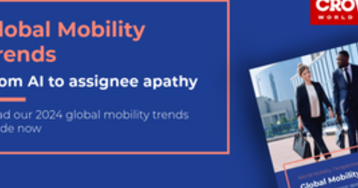Analyses & Studies • Sectors & markets • Foresight • Publications
MediaCom: Are you future ready?
In 2017, MediaCom APAC brought together advertisers, media owners and tech players for a day of debate and inspiration, unravelling the technology trends that are knocking on the marketer’s door. To help you, here are three key technology trends you need to look out for to be future-ready:
1). PREPARE FOR LESS OR NO INTERFACE
In the world of AR, VR, AI, virtual assistants, autonomous vehicles, smart robots and brain/computer interfaces, it’s the emerging technologies that reduce – or even remove – the physical interface that will stick around.
“When Steve Jobs first came out with the iPhone, the most profound thing he did was to remove the physical keyboard,” says Chris Dancy, the world’s most connected human. In doing so, Apple got rid of the “cumbersome technology” and allowed people to behave more naturally through fluid touch.
Interacting with technology in more “human” ways has become the tipping point for when things become truly mainstream. Already, Touch, Voice and Haptics have taken over our lives. In contrast, Virtual Reality and the more immersive formats of Augmented Reality are yet to become popular at scale, burdened by headwear that isn’t intuitive to put on, not to mention the clumsy hand accessories that go along with it. Once Mixed Reality can make the experience more natural, minimising the physical interfaces we need to use, mainstream adoption will really take off, argues Viziofly, a VR leader in Singapore.
Entering further into the sci-fi realm, we’re now starting to hear seeds of brain-machine interfaces, including the likes of mind-controlled prosthetic limbs being worked on by John Hopkins University, brain-interfaces for typing and “skin hearing” by Facebook, and the “neural lace” implants Elon Musk is keen to pursue. While still many, many decades away, funding into such research predicts a very-real future where the idea of text, swipes, clicks, and even voice is all going to go away.
2). INTEGRATE TO REMOVE CHOICE
With the proliferation of Voice, our app choices are getting narrower and narrower. If you have an iPhone, Siri only accesses Apple’s version of Calendar, Mail and Music. If you buy Amazon Echo for the home, Alexa only uses Amazon products and services (or their official partners). So, what happens if you prefer to chat via WhatsApp, listen to music via Spotify, send emails using Gmail, read audiobooks on iTunes, and watch movies on Amazon Prime? Does the convenience of Voice go completely out the window when your first, second and third-party apps don’t play well together? And with more automation coming down the pipeline (think brain-computer interfaces), is choice removal going to be an exacerbated annoyance?
With the power of today’s pervading technology companies, the ecosystems that have arisen offer you less choice than it may seem. Chris Dancy points out that it’s not necessarily a negative (and sure, there are workarounds to customise your choices), but the everyday consumer will generally choose convenience over choice.
In the future, people will want seamless experiences or “habits”. If you can build helpful tools into your brand stories that work inside existing ecosystems, then you’re tapping into an established habit rather than asking someone to download yet another app. The brands that get this right will be the brands that consumers will thank. If you’re a weight-loss product/service, integrate a new habit into Apple Health. If you’re a travel company, build a direct path to booking flights via Siri. Design for habits and experiences that live inside applications people already use, thereby removing choice and giving greater convenience. When you can listen to music, send a Snapchat or order your dinner all within the Uber app, why would you want to download anything else?
3). RETURN ON TIME INVESTED WILL BE THE ONLY IMPORTANT CURRENCY
Time has become a critical factor when it comes to experiences and technology. Today, five seconds to buffer a video is four seconds too long. Clicking twice to pay for something is one click too many. Everybody wants everything now!
According to Fitch’s Asia CEO, Andrew Crombie, “Time is the new currency of experience. And whether that’s spending time or saving time, the most important metric for a consumer is if they feel that their time was ‘well spent’.”
The technologies that will be embraced in the future are the ones that maximise one’s Return On Time Invested (ROTI).
To date, much of technology has focused on saving time – doing things faster, finding things faster, etc. A new beta example of this is with AmazonGo in the US, where thanks to the interlacing of the digital and physical space – and a combination of good old mobile, AI, biometrics and facial recognition technology – our physical shopping experience will become completely frictionless and automated, with no lines, no checkouts and no wallets. Amazon has completely changed our expectations of how we will shop in the future brick-and-mortar world.
While a lot has been done in the “save time” space, there still remains rich potential in the “spend time” space. How can we use technology to save time on things we don’t like to do, and spend more time on the things that we do? This is where advertisers can truly differentiate themselves, giving consumers more incentives to spend more time with their brand. Take for instance, another Amazon example: its new Echo Look. By adding an “eye” to the “ear”, you can now ask Alexa to help out with your fashion choices. Echo Look allows people to take selfies of themselves in particular outfits, then uses deep learning to help rate their particular style and offer curated looks based on the latest fashion. Synced straight to personal shopper bots, Amazon can then immediately send through the recommended pieces, linking the entire user experience straight through to commerce.
The technologies and brands that deliver best on Return On Time Invested (whether that’s to spend time or save time) will be the ones that survive the hype.
What all of this means is that while the future is undoubtedly very hard to predict, there are some key areas that marketers can close the knowledge gap on to help them succeed: prepare for no interface, integrate to remove choice, and focus on ROTI across all brand interactions. By better understanding the direction that new technologies and digital solutions will take, marketers can try to get there first before the consumer eventually comes along.



